If you’re going to stall a manual car, I highly suggest doing it in a place no one will notice. Driving along Del Monte Avenue in Monterey during the biggest car event in the world would, by this measure, be one of the worst places you could let such a car die. Trust me, I know.
I’ve driven air-cooled Porsches before. I know they’re not hard cars to pilot around town, which is part of the appeal. Not only have I driven old 911s, I’ve driven another late ’80s Porsche 911, much like the one you see pictured here.
With only about three minutes of seat time, I was trying to divine all the differences between that car and this one that were not superficial. What, functionally, was different?
Distracted by cameras and a need to both talk about this car, process what this car meant, and navigate to somewhere I could drive it that wasn’t a traffic jam, I missed the most obvious difference: The emergency brake was engaged.
Not all the way. I’d thoughtfully put the brake down as soon as I started driving, just not that thoughtfully. It was still partially employed, enough to generate a light stench and require more gas than I had expected.
Oops. With that parking brake all the way down, I was ready to give the hybridized Vonnen 911 the attention it deserved.
If You Have An Old 911, You Probably Want More Power
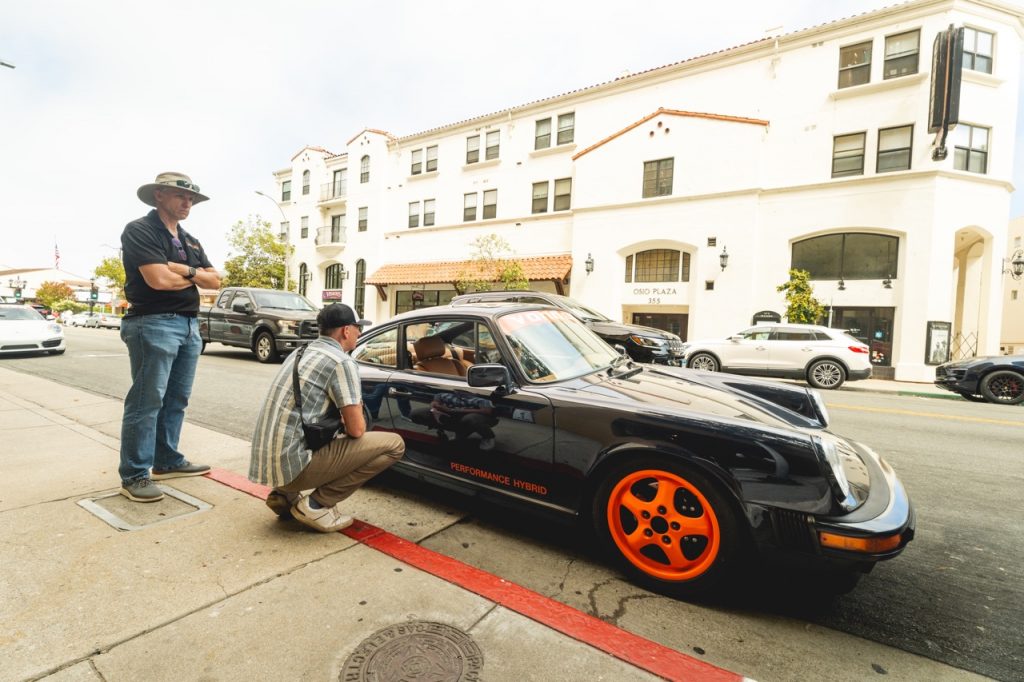
One of the old gents of Monterey is a man named Dodi Khalil, the gregarious owner of Dodi Auto Sales, which I visited during Car Week. Dodi and I chatted for a bit about the car market, the Murano CrossCab, and about Car Week itself.
I couldn’t help but notice, being a keen-eyed journalist, that his lot had been transformed almost entirely to air-cooled 911s for the week. That’s where the money is. Everyone wants a 911 and, at the same time, every 911 that isn’t a rare and pure survivor is apt for some level of modification, from a set of new wheels all the way up to complete Singerization.

More often than not, what people seem to want is more power. There are a lot of ways to achieve it, though the most common ways are increasing displacement, upgrading what’s already there (hotter cams), or adding some sort of forced induction.
These inevitably modify the character of the car and, depending on how far you go, the usability or durability. Giving most regular old 911s more power is generally wise, as they can feel a little underpowered compared to what you might expect just looking at one.

What the company Vonnen is offering is a different way to add power, and one that doesn’t seem to change the character of the vehicle all that much in any way anyone would care about, while also definitely improving usability and, potentially, durability.
The way Vonnen approaches the problem is seemingly simple, even if the actual science and engineering behind it is a bit more complex than the straightforward experience of driving the car actually lets on.
Turning An Old 911 Into A Hybrid

I like this image from Vonnen, which shows quite clearly how small the actual motor part of the hybrid system is. Where you’d normally have a starter motor/flywheel assembly between the motor (whether air-cooled or water-cooled) and the transmission, there’s a relatively small axial motor that connects to the transmission bellhousing. This is what Vonnen calls the “Shadow Drive” unit, and it’s good for up to 150 horsepower and 120 lb-ft of torque (150 lb-ft for the water-cooled cars) at essentially the press of a button. There’s a lot more on how this works in this article on Beau’s bb 911, which uses the same system.
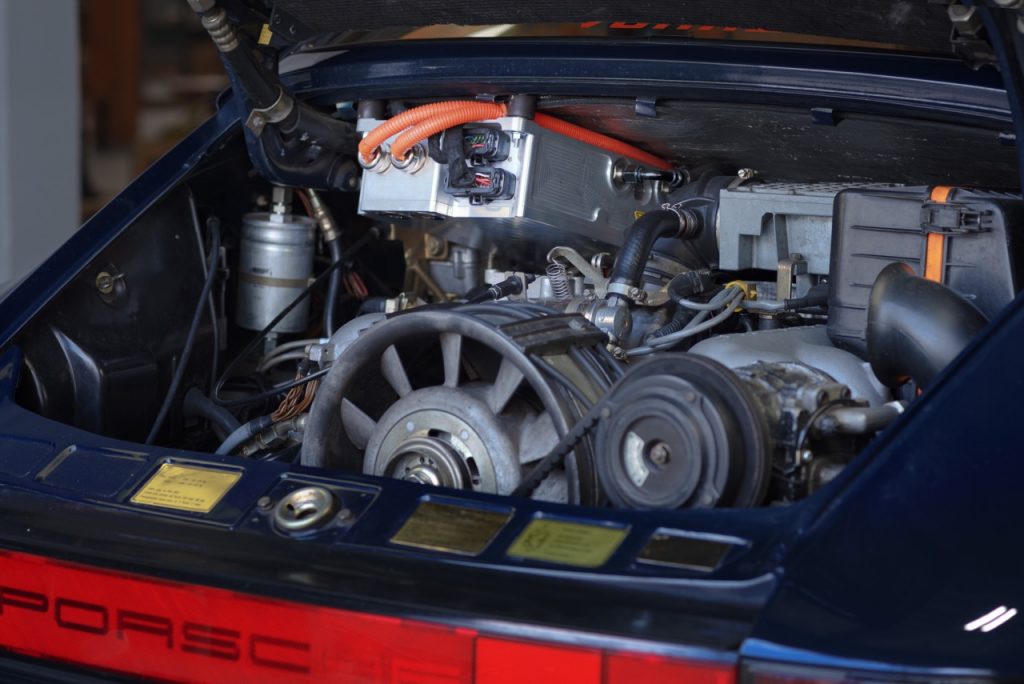
This isn’t everything you need to make the system work, obviously. There’s a small battery (about 1 kWh) in the frunk, which means removing the spare tire and some of the fuel tank’s capacity. There’s also an inverter to convert DC power from the battery into AC power for the motor, and the reverse when charging the battery.
If you make an upgrade to a newer 911, the car already keeps track of all the data necessary for the system to work seamlessly. For the air-cooled versions, more sensors and wiring are necessary so the system can both understand what your car is doing and communicate with your phone. No matter which vehicle you start with, it also needs coolers for the battery/thermal management.
But the cleverness of the design is that the powertrain itself is relatively unchanged in any way that seemingly matters, and the replacement of the starter motor and flywheel means the whole system only results in a net weight increase of 150 pounds.
Power At The Push Of A Button
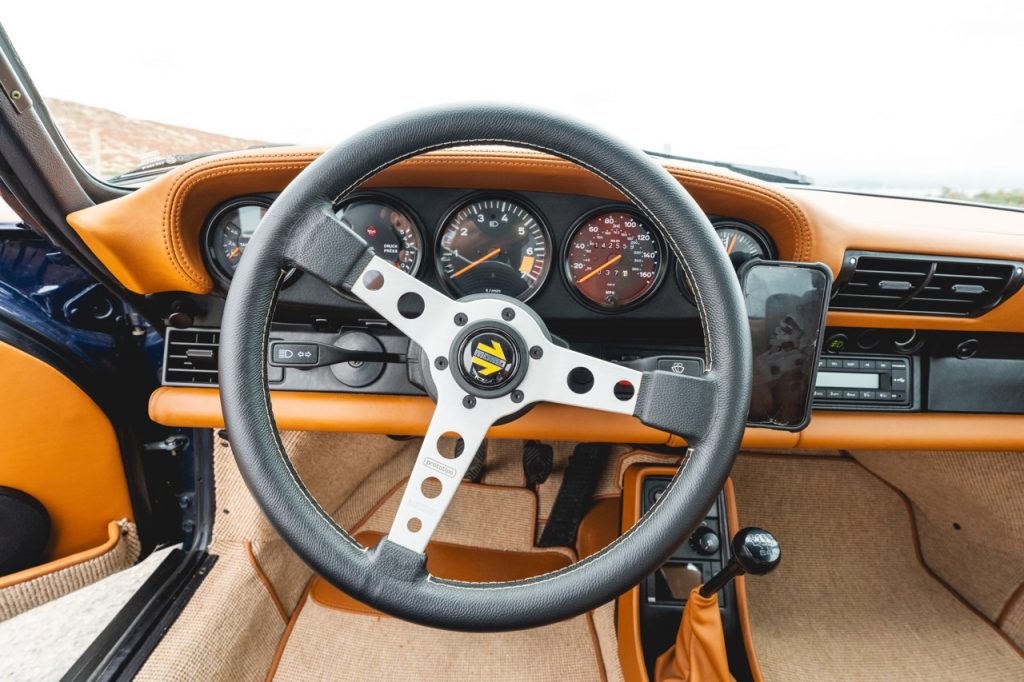
Not since your mom got an extension cord for her Hitachi massage wand has anyone had easier access to power and pleasure at the press of a button. This time, the button is on your smartphone display using Vonnen’s app, meaning that the interior of your car requires no sort of special upgrades. If you remove your phone from the car, then it all goes back to stock.
When I first started driving the 911, the most obvious difference was in how the car started. Thanks to the motor, the car fires up quickly and easily in a way that’s easy to mistake for a more modern Porsche.
I started out in “Stealth Mode,” which is designed for around-town driving.
Admittedly, my expectation was that the system might act more like most hybrids I’ve driven and provide power immediately off the line. That’s not how “Stealth Mode” works on this car. As Vonnen’s co-founders Chuck Moreland and Bill Davis explain to me when we stop for photos, that’s not where they see most drivers needing the power.
While being able to provide more juice from 0-10 mph under low throttle is probably better for efficiency, it doesn’t do much for performance. It’s not until traffic gets moving and I get deeper into the throttle do I notice a pleasant push of power. Unlike a big turbo or supercharger, this is a rather linear and consistent affair that doesn’t feel like it ever drops off.
It’s nice. Once you get going, it makes the car feel faster, lighter, and not like any ’80s 911 I’ve ever driven.
Overboost!
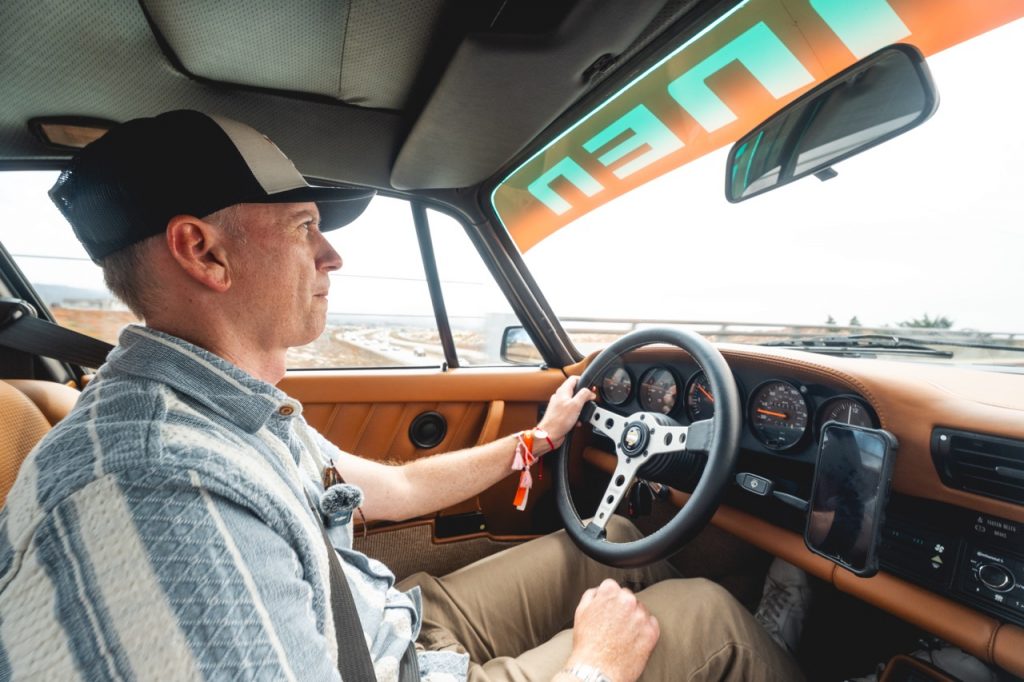
Ok, let’s be honest. It’s nice to have an old car that drives more like a modern one around town, but what you want is power when you can show off, and this is where the “Sport” or “Overboost” modes come in.
Monterey is full of fast cars that should not be driven fast on Monterey’s crowded roads, so I know my best bet for attempting these modes is to find a good on-ramp onto Highway 1.
As you can see in the video, it’s obvious when it’s in use. The problem with driving modified cars is that you’ve often not just driven an unmodified version, so your brain can trick you into thinking a car is better than it is.

My first highway pull is with Overboost on, and it has none of the usual high-rev fall off that you get with stock air-cooled 911s. Right when you’d expect horsepower to fall off, it’s like you’ve been given a second engine. It’s quite remarkable.
Having faith in his product, Chuck insists I try to do everything with the system entirely off. So I shut it off. The difference isn’t even night and day. It’s Havøysund, Norway in December versus Phoenix in June. I’m rolling at about 20 mph and try to accelerate up to the speed limit, and, yeah, nothing. Or what feels like nothing. Just normal, kinda slow acceleration.
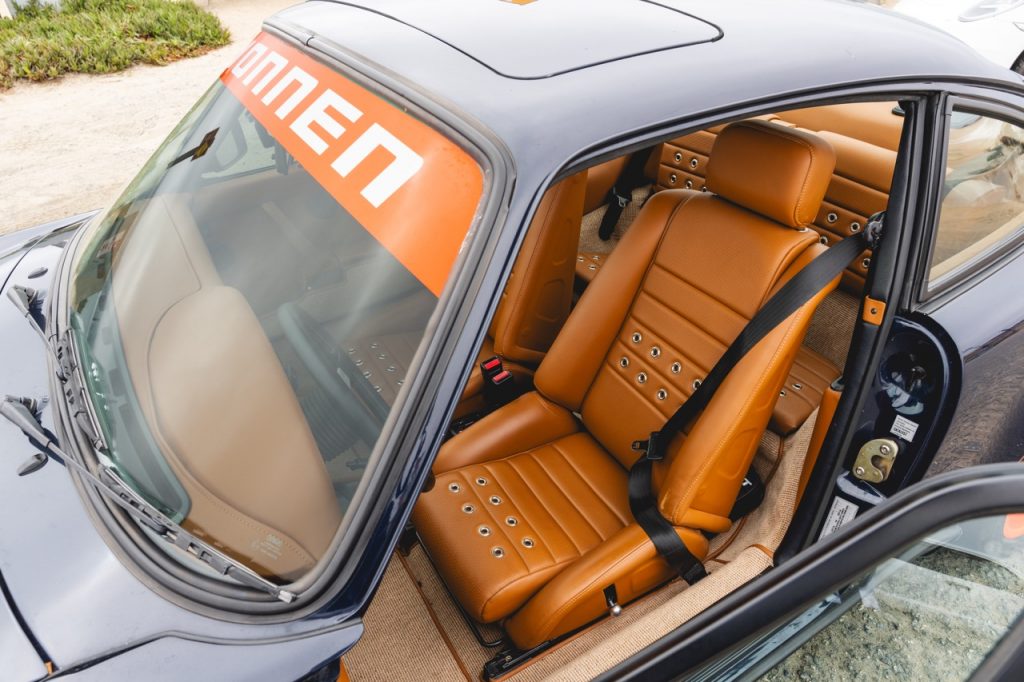
I shift the system back on and go for another round, and it’s just so much fun, even if it just sounds and otherwise drives like you accept.
Is this eating your schnitzel and having it, too? Not quite.
The H Is O
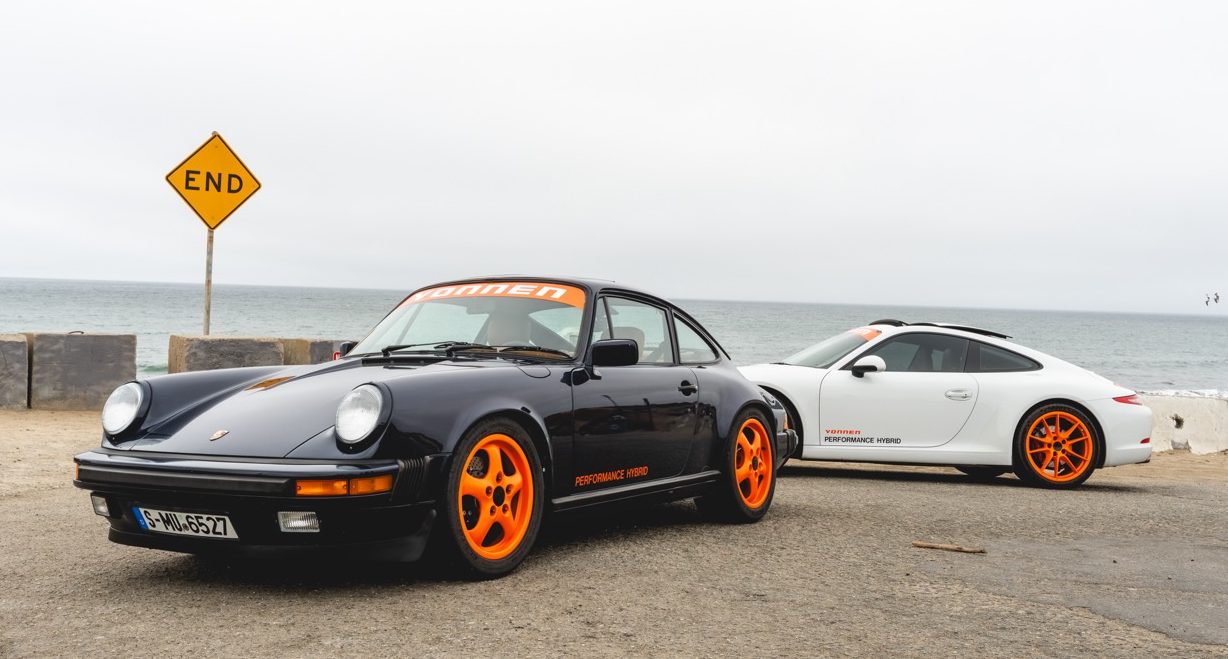
If you’re curious why a driver can’t just have this extra power all day, every day, it’s not the size of the battery that’s holding the system back. It’s thermal management.
One of the most important parts of the app is not the bit that shows you how much power you have, it’s the one that shows you how much heat you have. According to the system’s inventors, in almost any situation you face, the car will lose its cool before it loses its charge.
In my hour with the car, I never had that issue, as the 911’s thermal management system and the coolers managed to keep up with my mostly normal use. On the track, or in a situation with more spirited driving, you’ll have to be more conscious of temperatures and look at it as something more like a push-to-pass than a turbo (although, in this way, it’s a lot more like a Turbo button in old car racing games).
The other catch is the price.
This system costs $54,000 for Stage I (75 hp) and $69,000 for Stage II (150 hp, like the one I drove). If you want the system installed, that’ll total $75,000. If you’re creating a wicked 911 like the bb 911 that Beau built, this seems like a no-brainer. If you have limited funds, a nice set of tires is probably a better expense.
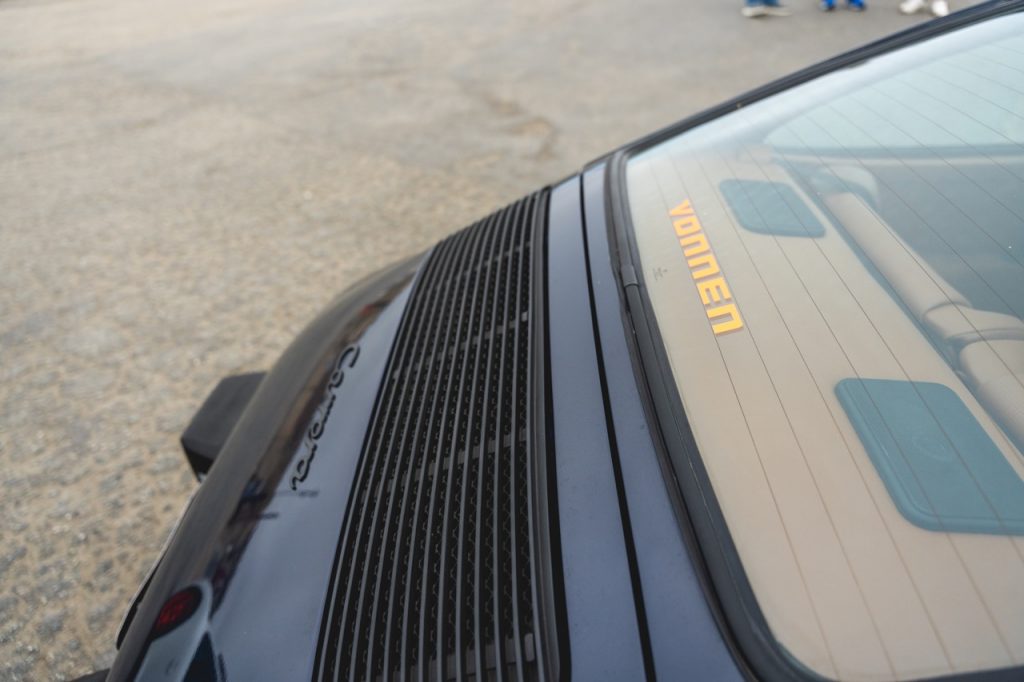
Shadow Drive can be installed in a large array of Porsche products, whether AWD or RWD, air-cooled or water-cooled. The company is even helping a 912 owner put one on a four-cylinder car. As with all new technologies, I’m hopeful the price will come down as more products are shipped, but for now it’s not something you’d casually install.
Still, I love the idea of making something old even more usable without having to lose much of what made the car great in the first place. The old 911 market is a great place to start, given how much money is being spent there, but I’d be on board with seeing this same system applied to a wider range of cars.
Maybe inline-six BMWs next? It might be a selfish request, but that seems like the perfect evolution of the product to me.
Top graphic images: Griffin Riley; Vonnen

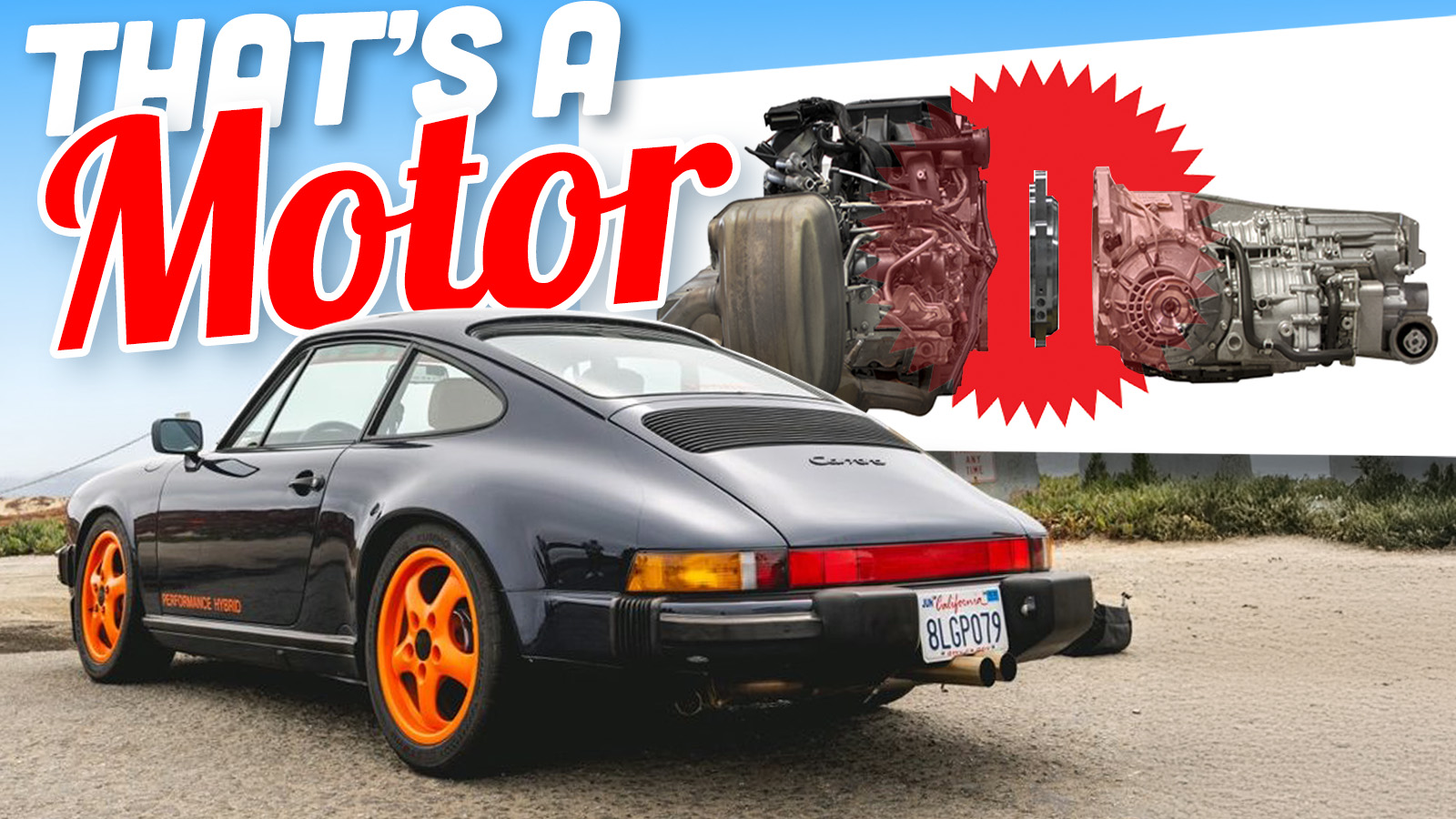
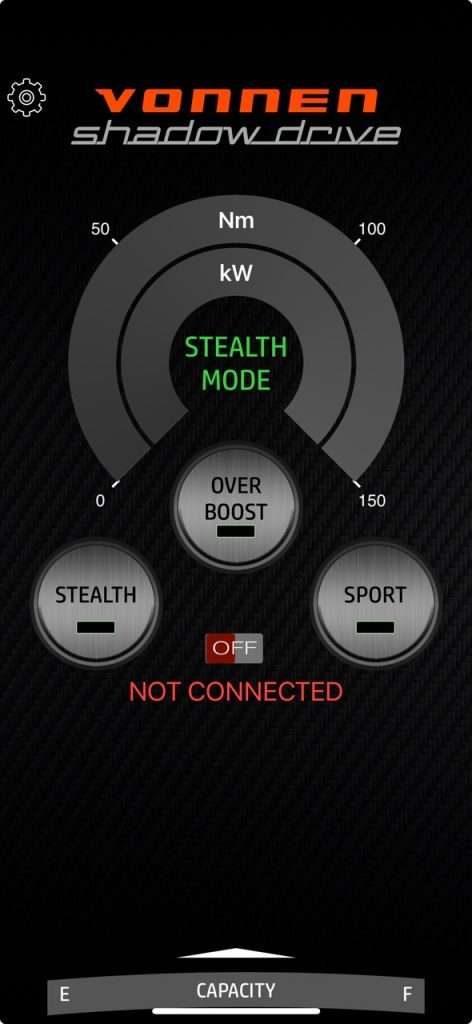







> Not since your mom got an extension cord for her Hitachi massage wand has anyone had easier access to power and pleasure at the press of a button
I love reading four other insider articles about the deep debates over proper word choice and journalistic ethics on this site and then just strolling into a line like this 😀
The orange wheels on this car are a bit much for me.
And my car is smart enough that it beeps at me if I haven’t fully released the hand brake.
The phone’s presence in the system seems like asking for failure modes.
I’d rather get my gearing just right and enjoy managing the revs.
I would like to point to the difference in motor setup between this and a factory Porsche EV.
The pancake type or axial flux motor is used here for its dimensions. This is a type of motor that is known more for torque and response, than for pure power. Because of the relatively high diameter rotor, max rpm is relatively low (and comparable to gas engine rpm).
In a factory EV, more emphasis is placed on the power, which requires high rpm and thus a smaller diameter. The required volume comes from a longer rotor. This type of motor is sometimes called a turbine type or turbo machine.
I do not think that Porsche is aware of this and they just use the TURBO-label because it sounds cool or heritage or something.
“I’m rolling at about 20 mph and try to accelerate up to the speed limit, and, yeah, nothing. Or what feels like nothing. Just normal, kinda slow acceleration.”
What gear were you in for this? A few weeks ago I spent a day driving a friend’s 1969 911 and it would get to 70mph pretty quickly. Certainly not slow.
I think there was an article about this before, because this is the exact same setup Honda used with the 1st gen insight; pancake motor in between ICE and trans. It’s a good place for it.
That said… part of the appeal of older 911s is the lack of power, becuase it forces you to rev them higher and they sound glorious at high RPMs. 54k is a lot of money. You can build a badass built 3.2 for 30k… so… hard sell imho.
Typically the closer you get to peak output of a given N/A platform, the more twitchy and tempermental it gets. With this system, it’s the exact same experience as stock, but faster. And likely less easy to stall in traffic.
I can see the appeal, even if it’s WAY outside my price range
At this point, air cooled 911s are not really seeing too much daily driver duty. May as well make them temperamental.
Counterpoint: if you make them more enjoyable to drive, people may drive them more.
I’ve been aware of these since at least 2019. Vonnen is functionally a part of Elephant Racing, who’ve been doing Porsche suspension stuff for 20+ years.
This thing has had a very long road to get where it is today, and given I heard about it in 2019, it was probably being skunksworked well before that.
Explains the price. That’s a lot of human effort to recoup.
Nice bit of kit! I’d ask why it’s $54k, but “Porsche tax” probably covers it.
It’s a great idea, even if I’m not a fan of an app (I’d want a simple dial or something wired in), but that price is completely nuts and someone is paying all that money to modify a 912?
Now do one that fits on an Iron Duke.
Or wait… get one made for David’s jeep or Jason’s 2CV.
“ Not since your mom got an extension cord for her Hitachi massage wand has anyone had easier access to power and pleasure at the press of a button”
What the hell is wrong with you?
Besides… they have switches… not buttons.
Well there is a button, but that’s for a different NSFW site.
I laughed pretty hard at this unexpected line.
I thought it was a neat hack leveraging an used IMA unit at first then got a bit sad. Upwards of 50k for a module that just gives you a 1kWh pack is kind of insane, though I understand it with the engineering behind it and the target market.
Does it? $54k could get you a whole other, likely faster Porsche. $69k definitely could.
I dunno, I’m sure modern porsches are faster than any air cooled, but people are dropping 500k or more on Singers.
54k is more than the the five most expensive cars I’ve ever bought added together. I can’t imagine that sum of money being a no-brainer decision on anything at all.